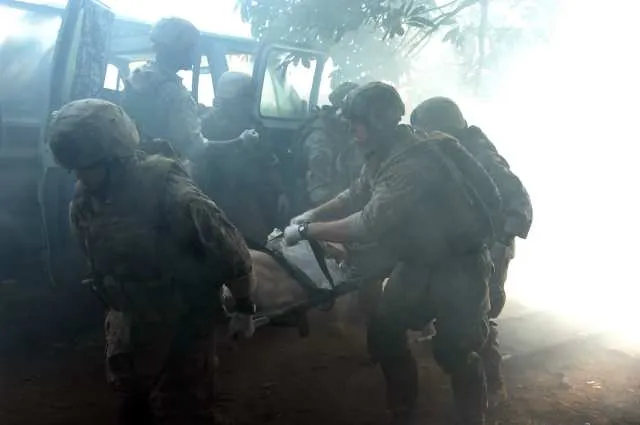It’s no secret the military trains the way they fight — which is pretty hardcore. Marines and sailors train in the terrible heat and rough terrain of the Mojave Desert to prepare them to face the enemy in the harsh conditions of Afghanistan.
During their pre-deployment workup, troops pretend to get hurt so that nearby medics can practice rendering proper treatment. This training only goes so far, though, as the semi-stressful situations can’t compare to the real vigors of war.
So, to get young medical professionals ready for bloody working conditions overseas, some of the troops are sent to a live-tissue training course stateside where they must keep wounded pigs or goats alive for hours — or fail the course.
These animals are chosen specifically due to their tissue similarities to humans.
Related: The ‘Prisoner Exchange’ is the coolest Army-Navy tradition no one talks about
Before heading down to the live-tissue training grounds, young troops go through three days’ worth of brutal training missions throughout Camp Pendleton. These missions consist of hunting down mock “high-value targets,” several hours of intense physical training, and miles of foot patrols with little to no sleep. Then, troops board a bus that takes them to an undisclosed location — the live-tissue training grounds.
“The instructors worked us hard all day and night,” one former hospital Corpsman recalls. “We all were completely exhausted before the lab even started.”
Once at the training ground, the troops gear up in full battle rattle, place their highly anesthetized agricultural animal on an Army litter, and carry it up a steep hill where the training begins. After dropping the animal off at the first station, medics seek cover until signaled to retrieved their severely wounded patient.

Once the troops retrieve their patient, the docs make lifesaving interventions.
Three or four battle-themed stations and several massive wounds later, the troops enter a large metal container and load their “patient” on board as if it were a medical evacuation helicopter. After being locked in for several minutes, the container’s door opens to a mock-hospital, where the troops continue to care for their patient.
If the animal dies throughout this process, the student fails.
Also Read: How one vet learned to actually appreciate his deployment to Iraq

Compared to a computer simulator, the “pig lab,” as many refer to it, puts actual life into the student’s hands, forcing them to think on their toes to keep their patient alive.
Although humans control the stimulator, this lab comes with an extreme level of unpredictability and is considered “great training.”
“It was the best damn training I’ve ever received,” the former hospital Corpsman remembers. “I felt much more confident to take care of one of my Marines if they got hurt.”
Although considered to be “great training,” PETA, or the People for the Ethical Treatment of Animals, has voiced, on many occasions, that they are entirely against using agricultural animals for military training.


